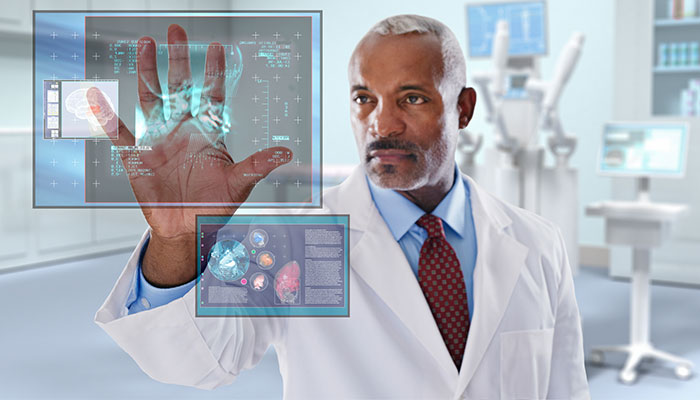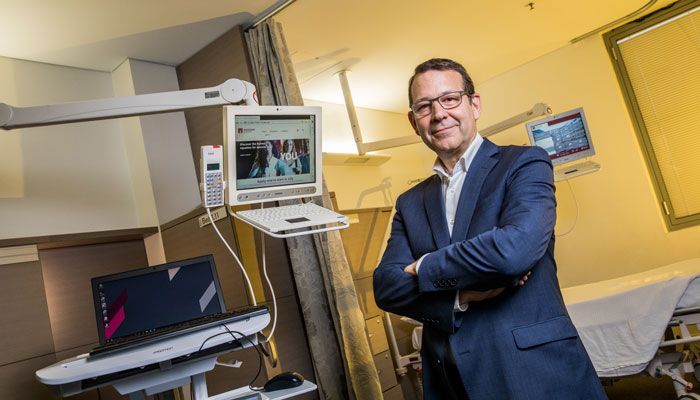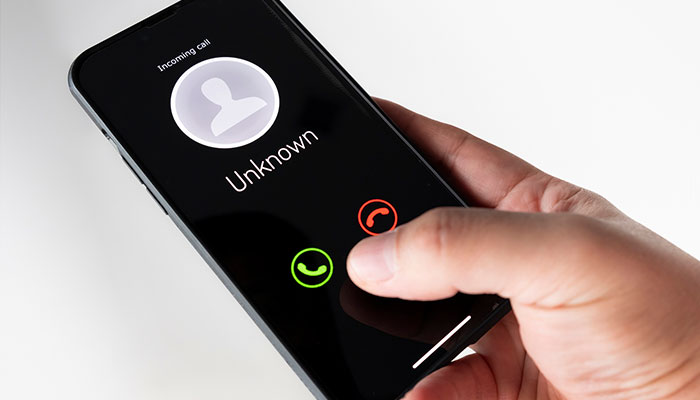While a robot doctor at the bedside is not on the horizon, data-driven digital health is transforming how we receive care - and society is still playing catch-up on the ramifications.

In 2012, Professor Enrico Coiera, Founding Director of the Centre for Health Informatics (CHI) at the Australian Institute for Health Innovation, published a paper titled The Dangerous Decade.
In it, he warned that more information and communication technology (ICT) would be deployed into healthcare in the 10 years to 2022 than in the health system’s entire history to date.
“Systems will be larger in scope, more complex, and move from regional to national and supranational scale,” he wrote.
“Yet we are at roughly the same place the aviation industry was in the 1950s with respect to system safety.”
What happened in that decade? And what can we expect from the coming one?
The networks are now smarter
Since the early 2000s, artificial intelligence (AI) systems have gone from relatively small artificial neural networks to super‑sized deep learning networks spread over many warehouse-sized server farms.

Technology behind the scenes: vast server farms (pictured) make it possible for deep learning networks to store patient recrods, deliver test results and assist in diagnosis and training.
Huge sums have been invested in deep learning technology, and these systems have become integral to our lives.
Social media, streaming and shopping platforms use them to learn our preferences to show us more of what we have taken an interest in before, mapping software plots our route to work, and the same technology is being used to develop different applications for healthcare.
Digitisation is everywhere, from patient record systems and the mail merges that deliver test results, to smarter systems that can assist in diagnosis and help inform care decisions.
“Training an AI takes a tremendous amount of effort,” Coiera says.
“Historically, we weren’t able to do it because of the time required, but this changed when the big players like Google and Amazon got involved.
“Now you could upload 20,000 x-rays of healthy lungs and 20,000 x-rays showing cancer, and instruct your algorithm to spot the difference.”
What are the dangers of AI?
When The Dangerous Decade was published, Coiera and his colleagues at CHI were gathering evidence that patients were being harmed by poorly designed and used digital systems.
Founded in 2001, CHI was one of the first organisations in the world dedicated to health informatics, and by 2012, it was leading the way in identifying the risks associated with AI and raising the alarm.
“Digital risks continue to be one of the largest risks that a lot of healthcare companies have,” Coiera says.
The community has made it very clear that the number one thing they want from AI in healthcare is good governance for safety, quality and ethics
“Negative outcomes have been rare, but we are now rolling out these systems on a scale that we’ve never seen before and there is still a long list of things that can go wrong.
“There are the direct risks to patient safety, like negative drug interactions, the wrong drugs being administered or test results being mixed up, but then there are the more systematic concerns relating to regulation and ethics.
“How are new systems assessed and approved? And how is our confidential information being stored and used?
“One government might lock things down tightly to protect confidentiality, but the next could throw all of that out the window.”
For example, there was an outcry in the United Kingdom when the National Health Service (NHS) announced a plan to sell individuals’ medical records to drug and insurance companies in 2014, and in the wake of the reversal of Roe vs Wade in the United States, healthcare professionals are currently considering how they can prevent patients’ medical information from being used against them.
“These dangers are still front and centre, but the good news is that they are increasingly being taken seriously,” Coiera says.
“The community has made it very clear that the number one thing they want from AI in healthcare is good governance for safety, quality and ethics.”
Assisting, not replacing
By 2032, Coiera says AI in healthcare will be as run-of-the-mill as Netflix is in entertainment.

The upside: Digitalisation can help healthcare work smarter, with video conferencing and telehealth reducing travel and smart technology making screening programs more sustainable and accessible, says Prof Enrico Coiera (pictured).
“For example, symptom checkers, when done well, can be extremely useful in performing tasks like analysing symptoms to advise people whether they need to see a doctor immediately or in a few days, and in scheduling vaccinations.
“But we’re certainly not looking at Star Trek-style holograms taking the place of human clinicians in making our care decisions.
“AI will assist, not replace, giving health professionals more time for the patient-facing services and individualised advice that we all value.”
Digital health also has important work to do in the fight against climate change and its effects.
In the past two years, world health systems have had a huge shock with the COVID-19 pandemic, and it’s unlikely to be the last.
“There are more floods, fiercer bushfires and large-scale hot weather events like we are seeing in the UK now, and pandemics will come with increasing frequency,” Coiera says.
“Nobody would say our health systems were in great shape right now, and we’re certainly not ready for a COVID-like shock every couple of years. But we do have opportunities to use digital systems to become more resilient.”
Healthcare has a surprisingly large carbon footprint, contributing about 10 per cent of the world’s emissions.
Digitalisation can help the system work smarter, with video conferencing and telehealth reducing travel, smart scheduling increasing hospital efficiency, and smart technology making screening programs more sustainable and accessible.
“We need to think of this as our call to arms – our ‘yes we can’ moment,” Coiera says.
Professor Enrico Coiera is the Director of the Centre for Health Informatics at the Australian Institute of Health Innovation, Macquarie University. He was trained in medicine and holds a computer science PhD in AI.



